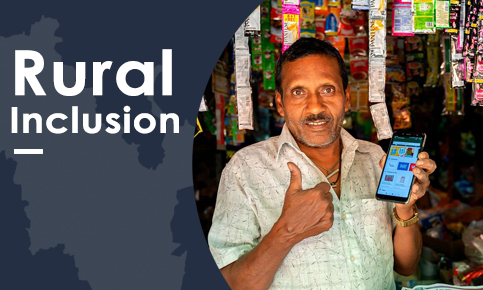India is home to over 1.3 billion people, out of which 850 million reside in rural areas. Major chunk of this population is underserved in terms of basic banking services. To promote financial inclusion, the GOI introduced various initiatives, most important among them was developing a digital pipeline that involved linking Jan Dhan accounts (currently standing at 430.4 million) with Aadhaar cards and mobile numbers (i.e., the JAM trinity). With the latest launch, i.e., e-RUPI, the GOI has taken another step to fill the gap towards a financially inclusive India.
This digital infrastructure acted as an essential backbone for facilitating DBT (Direct Benefit Transfer) flows, adopting social security schemes, and promoting a cashless society by enabling digital payments through RuPay cards. Thus, accelerating the pace of developing an insured, digitalised, secured, and financially empowered society.
However, for the rural population to shift from cash to digital modes of transaction, the need for robust interoperable cash in cash out (CICO) network emerged. Hence, in conjunction with the GOI, the RBI launched the banking correspondent (BC) model and set up new brick-and-mortar branches and ATMs in every tier to increase penetration in Rural India and expand the banking network.
The challenges faced by Financial Institutions
- Geographical Base- Given India’s vast geographical base, large population and technological limitations, it becomes difficult for Financial Institutions to reach out to every individual.
- Limited Infrastructure- Setting up branches to increase touchpoints involves huge infrastructure costs.
- Regulatory Framework- The BC model has various regulatory requirements like settling withdrawals, complete accounting with bank branches within 24 hours of completing the transaction, etc.
Impact of Covid-19 on rural India
The rural economy of India is made up of both farm and non-farm industries. Millions of migrant workers send money home, contributing to the country’s non-farm economy, including formal and informal jobs in retail, construction, manufacturing, hospitality, education, and transportation.
During the pandemic, the AEPS enabled withdrawals witnessed accelerated growth on the rural payment segment due to the Direct Benefit Transfers (DBT) under the GOI’s social assistance programs. Resultantly, AEPS interbank transaction volume increased by 120% in FY2021 to 0.96 billion. On the contrary, AEPS volumes decreased by 17% to 158 million in the first two months of FY2022 at the second wave. This was because of the high base of April & May 2020, when the GOI transferred money under various social support assistance schemes as a one-time measure.
While the pandemic gripped the cities, the gravity was relatively lesser in rural areas. Nonetheless, this opportunity boosted and furthered the step towards digitalizing rural India. Although challenges persist, a slow and steady approach by leveraging digitization can ensure rural inclusion to a large extent, if not completely.
